An upcoming Climate Change Traveller feature will help users to calculate their carbon footprint through flying to help them make more eco-friendly decisions
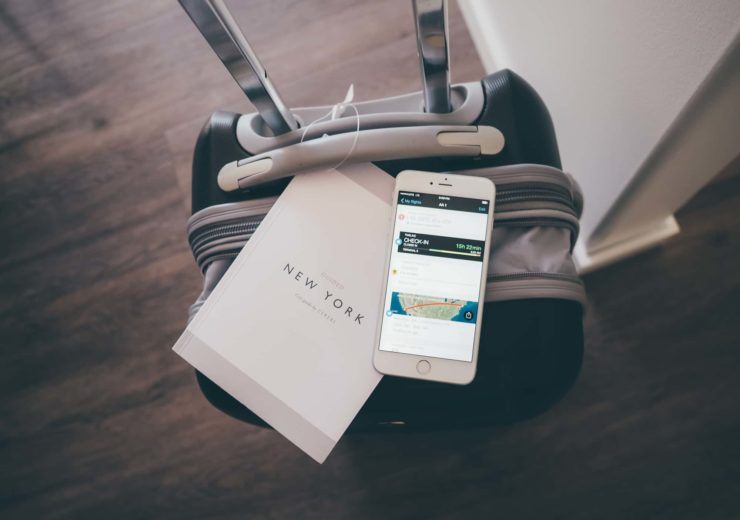
App in the Air is a travel assistant app that aims to provide all the information a person needs before and after flying
Described as the “Waze of air travel”, App in the Air is aiming to become the go-to travel assistant app for business travellers. Dan Robinson meets with founder and CEO Bayram Annakov to find out how it works, the Hollywood film that inspired it and his views on flight-shaming.
The difference between a relatively frequent flyer and an aviation geek is that when an airline loses a passenger’s luggage, the fanatic isn’t annoyed like the average person – instead, they’re happy at getting $500 to buy new clothes and then receive their suitcase in a few days’ time.
They also know their Airbus 320 from their Boeing 777-900 and like to know exactly which aircraft they’ve flown on in recent times.
It’s this type of business traveller who Bayram Annakov believes would benefit most from App in the Air, which aims to be the one-stop-shop information hub for someone catching a flight.
The personal travel assistant app keeps track of itineraries, boarding passes and frequent flyer programmes, while also keeping users up-to-date with boarding and landing times as well as estimates on how long it will take to pass through the check-in desk and security.
“I’d call myself an aviation geek,” says 36-year-old Annakov, who amassed 400 hours of air hours across 98 flights last year.

“When you’re focusing on aviation geeks or frequent flyers, they have different information needs to the average Joe and we need to understand these so we can improve their experience.
“For someone who’s travelling every couple of weeks, they might forget when their next flight is so we put all the details they need into their calendar and inform them how long it is until their departure, as well as everything else they might want to know.
“Not only do we consolidate all the information they need, but we crowdsource information from our users and share it with others to help them plan their journey.
“For a 7am flight from LAX, it might take 45 minutes to get through the security check, whereas the 6am might only take 10 minutes so people want to know that information when they’re flying a lot.
“Our idea is to create a personal travel assistant that will guide someone through their travels and make it less stressful as we possibly can.”
How a George Clooney film inspired App in the Air
When Annakov meets NS Business at a WeWork office in central London, he’s already lived a rather nomadic lifestyle over the five days prior.
There are plenty of non-stop flights from his Seattle hometown to the UK capital but he decided to take a detour via Zurich to catch an easyJet connecting flight.
On his return to the US a week later, he would fly with Norwegian – but not before staying in four different hotels.
It’s all part of a penchant for trying out new airports, airlines and accommodation wherever he is in the world.
Annakov says: “What I love about travel is it’s so different. You meet so many people in so many places.
“I’m fascinated by airports because I love this feeling where you aren’t in the origin or destination, but somewhere in between.”
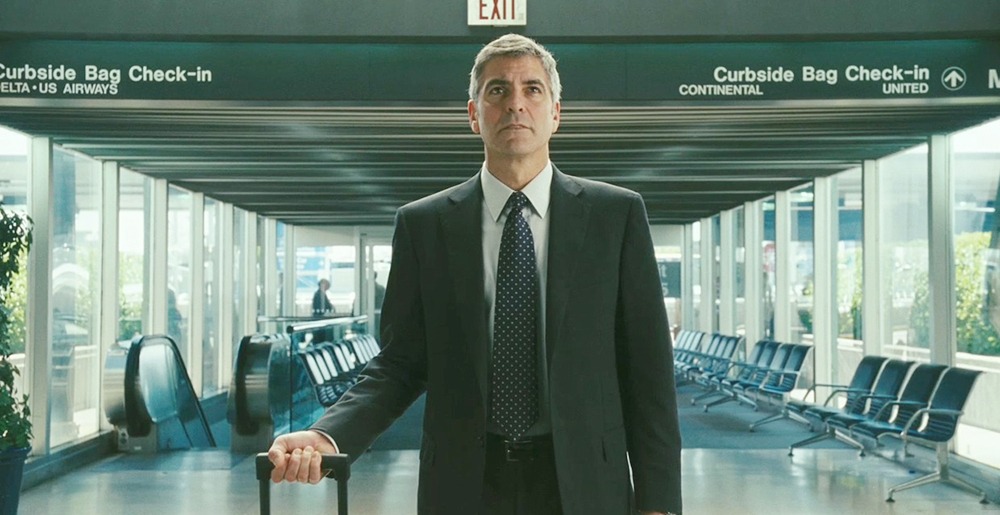
This state of limbo sounds a bit like the Tom Hanks-starring film The Terminal but it’s actually another Hollywood movie that provides some inspiration for App in the Air.
In 2009’s Up in the Air, George Clooney’s character Ryan Bingham strives to become the seventh – and youngest – person to earn 10 million frequent flyer points with American Airlines.
His job as a termination of employment assistant means he doesn’t stay in any single place for a long time and he develops a love of travelling.
“This is the type of person we’re developing the app for,” says Annakov, whose company name is a clear nod to the film.
“Frequent flyers and aviation geeks love travelling and staying in different places. They’ll use acronyms for airports and airlines, which an ordinary traveller wouldn’t, and the air miles are really important to them.”
While many companies like App in the Air began after their founder encountered a problem they wanted to fix, for Annakov it came about mainly as a result of trialling new technology.
Before then, he had yet developed a love of travel – if not yet a frequent flyer habit – as a senior project manager for software outsourcing company EPAM, where he led a global team of about 40 people.
He quit in 2008 because he wanted to mould a company around his own set of values and set off a chain reaction that resulted in App in the Air.
While running a tech consultancy in Moscow, where Turkmenistan-born Annakov had also studied earlier in his life, he recruited graduates from a university at which he taught on the side.
They helped him to come up with new ideas, which also included a white-label delivery service app for restaurants and coffee shops so they don’t have to hand over their customer base to companies like Deliveroo and Uber Eats.
But it was App in the Air that has really taken off, so to speak, since it was launched in 2012.
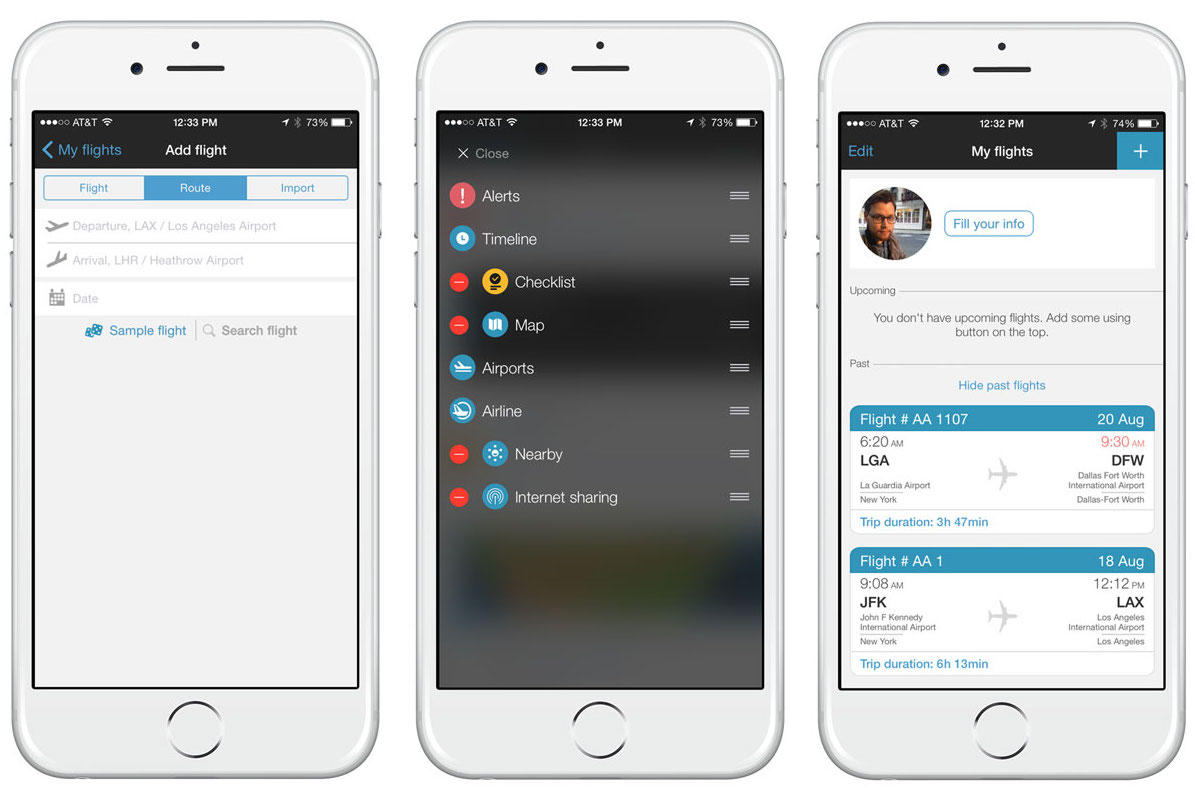
Available on iOS and Android devices, has built a user base of 5.5 million people worldwide – roughly half come from the US and 35% from western Europe, with India a particularly growing market – and the average person takes nine trips, or 18 flights across numerous airlines, each year.
Apple named it among the best apps on its App Store in 2015 and it won a similar accolade last year specifically for Apple Watch apps.
The company’s headcount now sits at about 40 people, the vast majority being Annakov’s students at one point.
The boss, who eventually decided to close down the consultancy in order to concentrate on the spin-off start-ups, says: “I love working with younger people because sometimes it’s the motivation and ambition they have that help to acquire any kind of skill.”
How does App in the Air work? Inside the personal travel assistant app
Annakov counts numerous different parties involved in his journey from Zurich to London alone, including a hotel, transportation and business lunch at either end.
It’s a lot of reservations and information to remember, and it was this idea that having them all in a single dashboard view that formed the original concept for App in the Air.
The personal travel assistant app displays information for all flights involving the user, notifying them about how long they have to check-in, the travel documents they need for each destination and even details about the weather.
“We want to have an assistant that’s both invisible but as helpful as possible to our key target base of frequent travellers,” says Annakov.
“The biggest problem with the travel industry is it’s very segmented.
“At first, we were focused on a post-booking experience but now we’ll follow the whole travel experience.”
This now takes the form of four stages, starting with searching and booking a flight.
The flight details will then automatically be exported to the user’s Google, Apple or Outlook calendar.
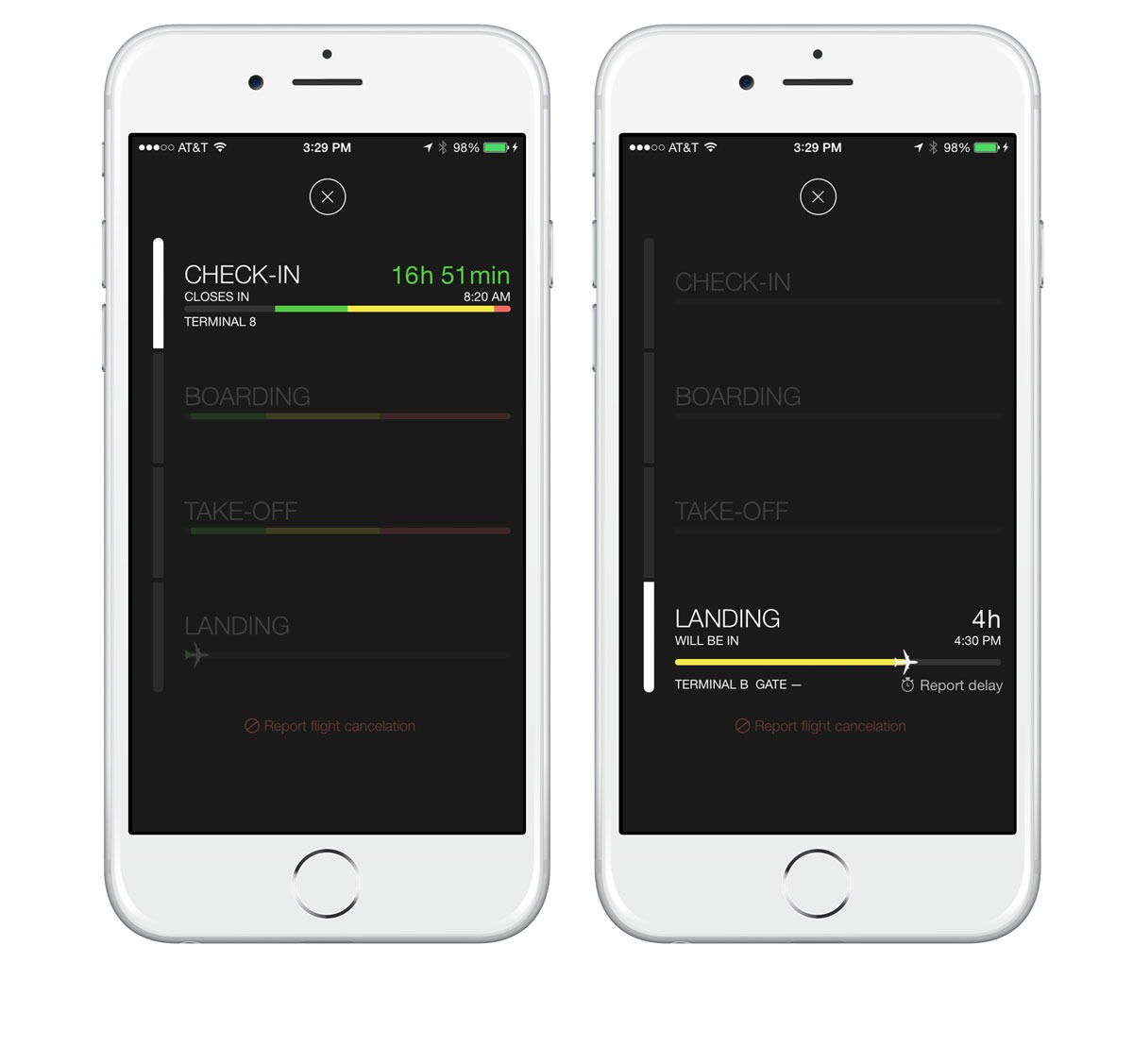
It includes more specific information than a simple Google calendar entry, featuring airport codes, booking reference numbers and flight numbers so a business traveller’s assistant can check them in for a journey if necessary.
This second stage of the journey typically occurs 48 hours before departure, and also enables App in the Air users to check baggage allowance and plan their route to the airport.
On the day of travel, live updates on waiting times for check-in, security and the flight are delivered to the user’s mobile alongside info on lounge access and any gate changes.
And once the plane touches down at its destination, the app will help with filing expenses, update air miles with airline loyalty programmes and make compensation claims for delayed flights.
Some useful tech is in play throughout all this, ranging from a 3D globe that maps flight paths to an augmented reality tool that scans bags to check if they fit a specific airline’s luggage restrictions.
Through travelling, users accumulate points and the app keeps track of their “score” in a worldwide leader board.
Users also earn badges for countries visited and travel achievements, such as visiting the same airport five times or travelling the distance of the equator.
Most of these add-ons are available on the free version, with a premium version that costs $29.99 per year offering upgraded features such as real-time flight status, offline access, family notifications and automatic check-ins.
Bayram Annakov on flight-shaming and climate change protests
A table ranking system for frequent flyers is possibly the exact type of scenario that climate change protesters are targeting with scorn.
“Flight-shaming” is creeping into everyday lexicon for many media outlets as the Extinction Rebellion movement has raised awareness about the huge environmental impact of air travel.
There have been calls to ban frequent flyer programmes as a way to discourage “unnecessary” business travel in particular, and it means App in the Air will have to tailor its product accordingly.
Annakov points to the app’s upcoming Carbon Neutral Traveller feature, which provides statistics to help people understand what impact their flying habits have on the environment.
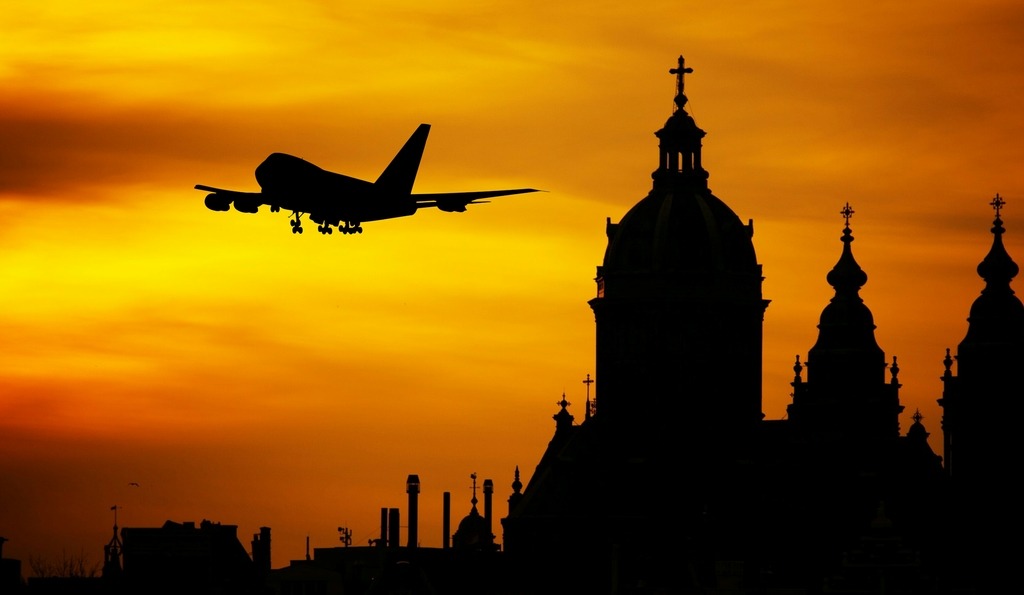
The idea won a hackathon held by the International Air Transport Association and is due to made available in the next few months.
“We will help travellers to offset their environmental impact by automatically calculating their carbon footprint and make a donation from the subscription fee to plant trees – which are shown in a map.
“There’s a huge trend of flight-shaming so we want to help people be more responsible.”
In terms of the broader problem – the aviation industry is responsible for 2% of global emissions and is one of the fastest-growing polluters – Annakov acknowledges change is needed.
“I don’t think you can deny the issue is there, but we still need to get from point A to point B, especially if A and B are on different continents,” he says.
“So we as an industry will have to change and move to carbon-neutral airlines and airports.”
How App in the Air is the ‘Waze of air travel’
When users of the Waze app are stuck in traffic or encounter a road closure, their location data is collected using a GPS signal and feeds algorithms that ultimately help other drivers to find the best route to a destination.
The most helpful people can also report accidents or construction work.
Waze, established in Israel in 2006 and bought by Google seven years later for $966m, is nothing without its community of 115 million users and while App in the Air’s user base is barely 5% of that figure, Annakov hopes to turn his app into the “Waze of air travel”.
“It’s all about crowd-sourcing information about traffic and things like police checks,” he says.
“Community drives Waze and it’s essential that even though Google acquired the company, it isn’t making it part of Google Maps because of this community – the moment it’s integrated, that would kill it because people care about Waze.
“I’ve studied its history a lot to understand what the key turning point was in its growth.”
Right now, App in the Air relies on people actively reporting information like waiting times but the team is working out how to make that information automatic without draining battery life by having the app operating in the background.
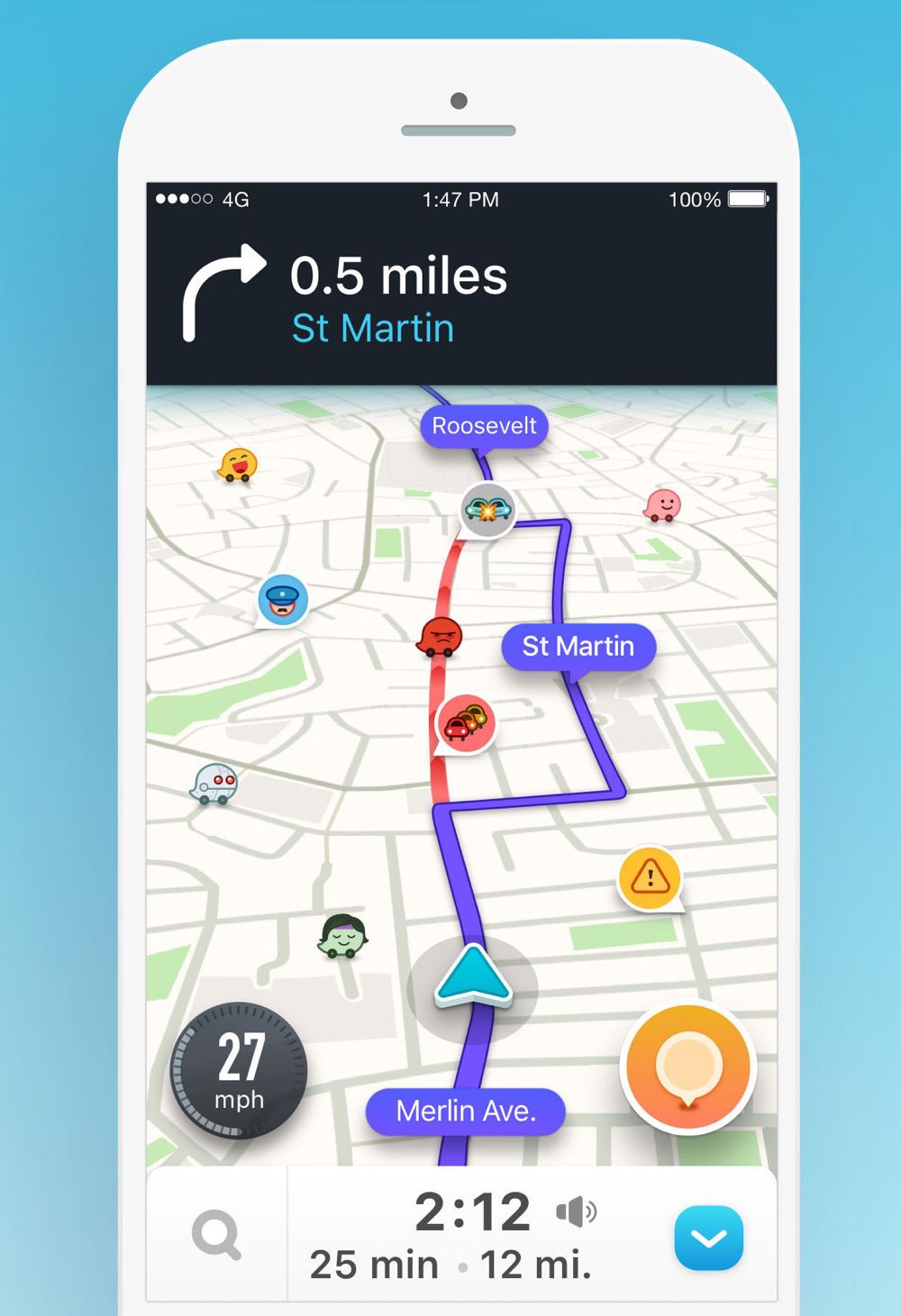
One way might be to build relationships with airports, which Annakov believes would be interested in sharing this information because it wants to make lives easier.
Many people are happy to share helpful information about anything from which airport coffee shop is open at 5am to the little-known places to charge a phone.
The community aspect is also evident in a functionality that enables users to meet up with each other during excursions.
“During business travel, you can often feel lonely,” says Annakov. “Typically you travel alone but there’s a lot of lonely people out there as well.
“Some of them are more experienced about this type of travel so why not allow them to help each other?
“We have a Nearby functionality that enables you to be visible to fellow app users who are making the same journey so you could meet up for a business lunch, make deals or share a taxi.
“It’s like in Up in the Air, where George Clooney’s character is giving the life hacks of travelling to his colleague.
“In the same way, we want our more experienced travellers to share their wisdom.”
Future plans for App in the Air’s personal travel assistant app – including new tech
In order to help understand the needs of the modern-day business traveller, Annakov and his team hold meet-ups with some of the most active users of the travel assistant app to get feedback.
These are often in aviation-themed locations, whether it’s William E Boeing’s “Red Barn” in Seattle – where Boeing’s first aircraft was manufactured – or at London’s Emirates Aviation Experience, which features a flight simulator and interactive exhibitions.
It’s at these events that the team will find out from its core user base which functions would most benefit them.
One thing that cropped up a lot was integrating flight and hotel bookings, something that’s now in the pipeline, while there are plans to eventually be able to store boarding passes in the app too.
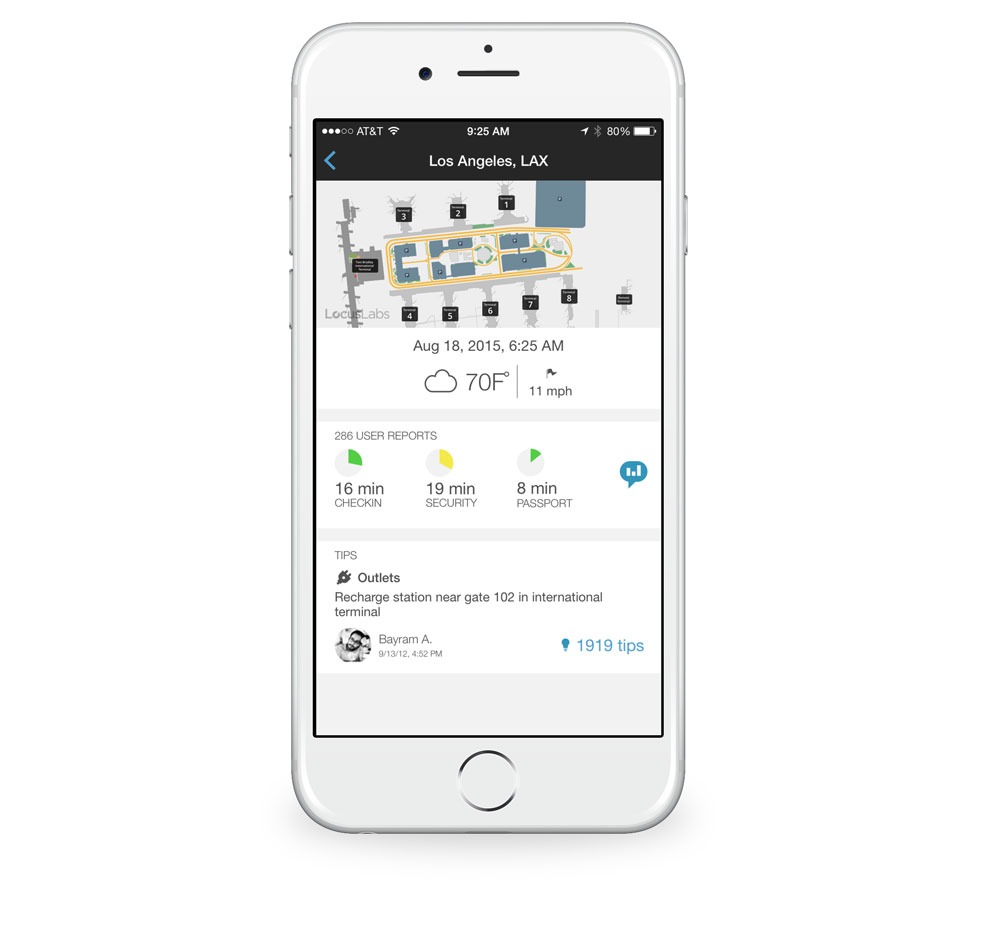
Annakov explains: “We’re testing direct booking integration with a hotel chain, such as IAG or Marriott, and airlines like United, Lufthansa and American.
“At the moment, if you book a Hilton Hotel via a platform like Booking.com or Expedia, you don’t get loyalty points and they take a fee.
“This is important for frequent flyers because they use company money to travel but earn the loyalty points to spend on personal travel, which is one of the benefits.
“For the airlines and hotels, it bypasses the intermediaries so they can have a direct relationship with the customer.
“That has two advantages – they can offer lower prices and it means they can offer ancillary services.”
For Annakov, this is all part of an “evolving living system” that is constantly in flux.
He adds: “My expectation is in a couple of years, most big airlines will completely remove the check-in procedure because it doesn’t make sense anymore.
“It made sense in the 1970s but now they sell the exact seats so automatic check-in won’t be as important a feature in a couple of years.
“That means we have to evolve what we offer as part of the package. We don’t want to be just another app – we want to be the most innovative app that simplifies travel using new technology.”


